|

On eBay Now...
1943 WWII MILITARY NAVY SHIP PATROL TORPEDO FLAG DESTROYER DE13 COVER FC2685 For Sale
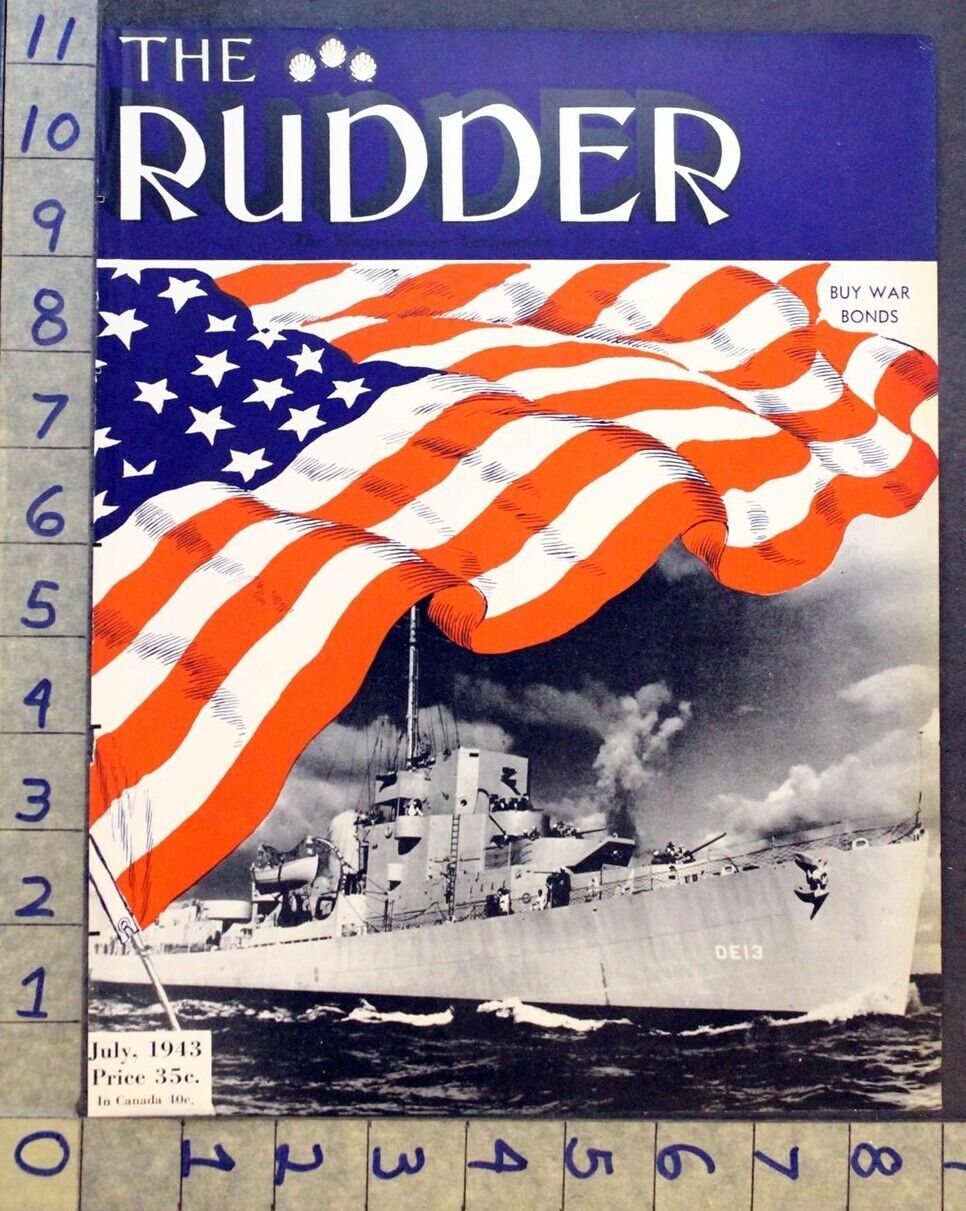
When you click on links to various merchants on this site and make a purchase, this can result in this site earning a commission. Affiliate programs and affiliations include, but are not limited to, the eBay Partner Network.

1943 WWII MILITARY NAVY SHIP PATROL TORPEDO FLAG DESTROYER DE13 COVER FC2685 :
$64.95
1943 WWII MILITARY NAVY SHIP PATROL TORPEDO FLAG DESTROYER DE13 COVER FC2685 DATE OF THIS**ORIGINAL** ITEM:1943
THIS IS A TWO-PAGE ITEM - MAGAZINE COVER ON FRONT WITH ADVERTISEMENT ON REVERSE - PLEASELOOK AT BOTH PHOTO\'S CAREFULLY FOR SIZE AND CONDITION!
ILLUSTRATOR/ARTIST: REAL PHOTO COVER
OTHER INFORMATION RELATING SPECIFICALLY TO THIS ITEM:
UNITED WE STAND:During July 1942, seven months after the United States entered World War II, magazines nationwide featured the American flag on their covers. Adopting the slogan United We Stand, some five hundred publications waved the stars and stripes to promote national unity, rally support for the war, and celebrate Independence Day.
For magazine publishers, displaying the flag was a way to prove their loyalty and value to the war effort. For the U.S. government, the campaign was an opportunity to sell bonds and boost morale. The magazines brought home a message of patriotism and ideals worth fighting for.
The National Museum of American History presents this exhibition to mark the sixtieth anniversary of the United We Stand campaign. Unfortunately,the website for this exhibition was retired in 2021due to incompatibility with current Web standards.
THIS COVER OF THE RUDDER SHOWED IT\'S PATRIOTIC UNITY DURING THE WAR, BY DISPLAYING THEAMERICAN FLAG PROUDLYON THE COVER.
APT boat(short forpatrol torpedo boat) was amotor torpedo boatused by theUnited States NavyinWorld War II. It was small, fast, and inexpensive to build, valued for its maneuverability and speed but hampered at the beginning of the war by ineffective torpedoes, limited armament, and comparatively fragile construction that limited some of the variants to coastal waters. In the US Navy they were organized in Motor Torpedo Boat Squadrons (MTBRONs). The PT boat was very different from the first generation oftorpedo boat, which had been developed at the end of the 19th century and featured adisplacement hullform. These first generation torpedo boats rode low in the water,displacedup to 300 tons, and had a top speed of 25 to 27kn (46 to 50km/h). DuringWorld War IItaly, the US, and UK developed the first high-performance,gasoline-powered motor torpedo boats (often with top speeds over 40kn (74km/h)) and corresponding torpedo tactics, but these projects were all quickly disbanded after theArmistice. Design of World War II PT boats continued to exploit some of the advances inplaninghull design borrowed fromoffshore powerboat racingand used multiple lightweight but more powerfulmarinizedaircraft-derivedV-12 engines, and thus were able to advance in both size and speed. During World War II, PT boats engaged enemy warships, transports, tankers, barges, andsampans. Some were converted intogunboatswhich could be effective against enemy small craft, especially armored barges used by the Japanese for inter-island transport. Several saw service with thePhilippine Navy, where they were named \"Q-boats\".[2]Primary anti-ship armament on the standard PT boat was four 21-inchMark 8 torpedoes, each had a 466-pound (211kg)TNTwarhead and had a range of 16,000 yards (15,000m) at 36 knots (67km/h). Two twin .50-inch (12.7mm)M2 Browningheavy machine guns were mounted for anti-aircraft defense and general fire support. Some boats carried a20mm (0.79in) Oerlikon cannon. Propulsion was via a trio ofPackard 4M-2500and later 5M-2500 supercharged gasoline-fueled, liquid-cooled V-12marine engines. Nicknamed \"the mosquito fleet\" and \"devil boats\" by the Japanese, the PT boat squadrons were hailed for their daring and earned a durable place in the public imagination that remains strong into the 21st century. Their role was replaced in the U.S. Navy byfast attack craft. At the outbreak of war in August 1914,W. Albert Hickmandevised the first procedures and tactics for employing fast maneuverable seaworthy torpedo motorboats against capital ships, and he presented his proposal to Rear AdmiralDavid W. Taylor, the chief of the US Navy\'sBureau of Construction and Repair.In September 1914, Hickman completed plans for a 50-foot (15m)\"Sea Sled\" torpedo boatand submitted these to the Navy in hopes of obtaining a contract. While favorably received, Secretary of the NavyJosephus Danielsrejected the proposal since the US was not at war, but Hickman was advised to submit his plans and proposal to the British Admiralty, which was done the following month. The Admiralty found it interesting but thought that \"no fast boat of 50\' to 60\' length would be sufficiently seaworthy\", so Hickman built and launched his own privately financed 41-foot (12m) sea sled capable of carrying a single 18-inchWhitehead Mark 5 torpedo.In February 1915, this Hickman sea sled demonstrated 35kn (65km/h; 40mph) speeds in rough winter seas off Boston to both US and foreign representatives, but again he received no contracts. The Admiralty representative for this sea sled demonstration was Lieutenant G.C.E. Hampden.[3]In the summer of 1915, Lieutenants Hampden, Bremner, and Anson approachedJohn I. Thornycroft & Companyabout developing a small high speed torpedo boat, and this effort eventually led to theCoastal Motor Boatwhich first went into service in April 1916. Meanwhile, in August 1915, theGeneral Board of the United States Navyapproved the purchase of a single experimental small torpedo boat that could be transportable. This contract for C-250 ended up going toGreenport Basin and Construction Company. When it was delivered and tested in the summer of 1917, it was not deemed a success, so a second boat (C-378) of the sea sled design was ordered from Hickman in either late 1917 or early 1918 (conflicting dates).Using his previous design from September 1914 and the previous unsuccessful offer for C-250, the C-378 was completed and fully tested just in time to be cancelled as a result of theArmistice. With a full loaded weight of 56,000lb (25,000kg), C-378 made a top speed of 37kn (69km/h; 43mph) with 1,400 horsepower (1,000kW), and maintained an average speed of 34.5kn (63.9km/h; 39.7mph) in a winter northeaster storm with 12-to-14-foot (3.7 to 4.3m) seas, which would still be considered exceptional even 100 years later. The sea sled did not surface again as a torpedo boat topic until 1939 but continued to be used by both the Army and Navy as rescue boats and seaplane tenders during the 1920s and 1930s. In 1922, the US Navy reconsidered using small internal combustion engine powered torpedo boats. As a result, two types—45-foot (14m) and 55-foot (17m)—of British Royal Navy Coastal Motor Boats were obtained for testing.The larger boat was used for experiments until 1930. In 1938, the US Navy renewed their investigation into the concept by requesting competitive offers for several different types of motor torpedo boats but excluded Hickman\'s sea sled.[This competition led to eight prototype boats built to compete in two different classes. The first class was for 54-foot (16m) boats, and the second class was for 70-foot (21m) boats. The resulting PT boat designs were the product of a small cadre of respected naval architects and the Navy. On 11 July 1938 the Navy issued multiple \'notice of competitions\' for proposals of design of four separate types of boat: a 165-foot subchaser, a 110-foot subchaser, a 70-foot motor torpedo boat, and a 54-foot motor torpedo boat.The winning design proposals would each receive a prize of $15,000 with $1,500 for designs that reached the final part of the competition each to be given out on 30 March 1939. The larger boat proposal was not to exceed 80 feet and was to carry at least two 21-inch torpedoes, four depth charges, and two .50-cal machine guns. The performance specification was to achieve 40 knots with an operating radius of 275 miles at top speed (550 miles at cruising speed). The smaller boat proposal was to weigh no more than 20 tons so that it could be easily transported by larger cargo ships. Its maximum top speed was also to be 40 knots, but specified operating radius was to be 120 miles at top speed and 240 miles at cruising speed. Equipped armament for the smaller proposal was to be either two torpedoes and two depth charges, or .50-cal machine guns and a smokescreen generator. By September 1938 the U.S. Navy had received 24 design proposals for the small boat and 13 design proposals for the larger 70-footer. Of those proposals submitted, three 54-ft designs and five 70-ft designs were of interest, and the designers were asked to submit more detailed plans for both the 54 and 70 foot boats by no later than 7 November.On 21 March 1939Sparkman & Stephenswon the prize in the 70-foot class, andGeorge Crouch(forHenry B. Nevins, Inc.) had won the design proposal for the 54-foot class.After winning the design competition for the smaller PT boat, Crouch wrote that Hickman\'s sea sled design would be far superior \"in either rough or smooth water to that of the best possible V-bottom or hard chine design\". Earlier when sea sleds were specifically excluded, Crouch had informed the Bureau of Ships that the sea sled was the best type of vessel for the job. Following the competition, contracts were placed for construction of boats: 25 May 1939 toHiggins Industriesfor two boats (PT5 and PT6) of the Sparkman & Stephens design, scaled up to an overall length of 81 feet; 8 June 1939 toFogal Boat Yard(PT-1 and PT-2) and Fisher Boat Works (PT-3 and PT-4) for the Crouch design; to thePhiladelphia Navy Yard(PT-7, PT-8) for 81-foot boats designed by the Bureau of Ships.These last two boats were constructed mainly out of aluminum and had 4 engines. Higgins built an additionalPT-6 \"Prime\"redesigned by Andrew Higgins personally using his own methods. Later that same year, Higgins builtPT-70(at their own expense) that incorporated slight improvements overPT-6 Prime. Later, rigorous testing performed on each design as well as changes in armament revealed limitations or problems that had to be fixed before they could meet required performance specifications. As a result, the Navy ordered further investigation and refinement of the existing designs until a satisfactory working design could be obtained. At the same time, Henry R. Sutphen ofElectric Launch Company(Elco) and his designers (Irwin Chase, Bill Fleming, and Glenville Tremaine) visited the United Kingdom in February 1939 at the Navy\'s request to see British motor torpedo boat designs with a view to obtaining one that could be used as a check on the Navy\'s efforts. While visiting theBritish Power Boat Company, they purchased a 70-foot (21m) private venturemotor torpedo boat(MTB) design—PV70, later renamedPT-9—designed by the power boat racerHubert Scott-Paine.PT-9was to serve as the prototype for all the early Elco PT boats. After the initial competition, in late 1939 the Navy contracted Elco to build 11 copies ofPT-9. On 11 October 1940 an agreement between the Navy andHuckins Yacht Corporationwas finalized. The Navy would provide engines and Huckins would build a PT boat at their own expense, with the caveat that the boat (upon completion) would be offered to the Navy for a later sum. This 72-foot (22m) boat (designated MT-72) later becamePT-69. Huckins reported a profit of $28.60 on this transaction.
TheElectric Launch Company, later renamedElco Motor Yachts(\"Elco\"), is an American boat building and electric motor company that has operated from 1893 to 1949 and from 1987 to the present. Elco first made its mark at theWorld\'s Columbian Expositionof 1893 in Chicago. Fifty-five launches, each 36 feet long and powered by battery-drivenelectric motor,carried over a million passengers. In 1899Isaac Rice, president of theElectric Storage Battery Companyand owner of Electric Boat Company, nowElectro-Dynamic Company, (both suppliers to Elco), acquired Elco as a subsidiary of his newElectric Boat Company. Elco built a new boatyard inBayonne, New Jerseysoon afterward. Previously, Elco boats had been built insubcontractedfacilities. By 1900, electric-powered pleasure boats outnumberedthe combined number of boats powered by steam and explosive engines (as gasoline-powered motors were called).By 1910, the advantages of the range and power of gasoline came to dominate the market and Elco converted tomotor boats. The company built the firstdieselpowered yacht in America,Idealia, built during 1911 and launched in 1912.Idealiawas owned by the company into 1916 and used for demonstrating the application oftwo strokediesel engines in yachts.On 22 October 1913 under ELCO corporate manager Henry R. SutphenIdealiaperformed a trial on theHudson Riverwitnessed by naval engineers and architects on a run of about sixty miles from the Columbia Yacht Club at 86th Street toCroton Pointand back.The originalIdealiainstallation was a reversible, air started, two cycle engine with six working cylinders and one two stage air compression cylinder that was rated at 150 horsepower at 550 revolutions per minute.The original engine was replaced by a NELSECO 120 horsepowerfour cycle engineby February 1915. DuringWorld War I, the company built five hundred and eighty 80-footsubmarine chasers(akaMotor Launches) for theBritish Admiralty, and 448 110-foot submarine chasers and 284 boats of other types for theUS Navy. Between the wars, it introduced the 26-foot Cruisette,acabin cruiserwhich became successful. This was followed in the 1930s with 30-foot to 57-foot Veedettesand Flattops. DuringWorld War II, Elco formed theElco Naval DivisioninBayonne, New Jersey. Nearly 400 ElcoPT boatswere produced for the U.S. Navy. After experimentation, the firstPT boatbuilt in any quantity was the 73-foot type. Later 77-foot and 80-foot types were built. More 80-foot Elco boats were built than any other type of US motortorpedo boat. Perhaps the most notable 80-foot PT boat wasPT-109, commanded by future presidentJohn F. Kennedy. Even though 85\' Elcocrash rescue boatswere substituted in the 1963 filmPT 109, the \"Elco\" script logo can be seen on the cockpit throttle housing in several scenes in the picture. At the end of the war, the company merged with its sister company,Electric Boat, underJohn Jay Hopkins. In 1949, Electric Boat decided to focus on government contracts for submarines, and Elco was closed until 1987 Today Elco produces hand-crafted replicas of some of its classic launches inAthens, New York.[The company also still makes electric motors, mainly used to repower sailboats and heavy displacement powerboats as a replacement for diesel engines. Their EP Motors range in power from 1–35kW, which is the diesel equivalent of 2–70hp.Elco has also worked on recent projects withHunter Marineto outfit some of their yachts with Elco motors and a combination of solar panels and wind turbines.
OTHER INFO OF CONCERN FOR THIS LISTING SPECIAL CHARACTERISTICS/DESCRIPTIVE WORDS:
BOATING MAGAZINES / PERIODICALS USUALLY HAD SUCH EXCITING AND BEAUTIFUL COVERS. THUS THEY MAT AND FRAME VERY NICELY FOR THE COTTAGE, BOAT + OUTBOARD COLLECTOR, PROFESSIONAL OFFICE, THE MAN-CAVE ---- AND OF COURSE ALSO THE SHE-SHED.......HAHA!
BECAUSE OF THE LIMITED AUDIENCE THE PRINT RUN OF MOST BOATING AND MOTORING PERIODICALS WERE MUCH SMALLER THAN THE \"MAIN STREAM\" MAGS. AND... BECAUSE OF THE NORMALENVIRONMENTPER USAGE THESE MAGS TOOK A LOT OF HARD \"THUMBING\" AND WEAR. SURVIVAL RATE WAS SMALL AS THEY WERE OFTEN PASSED FROM HAND TO HAND UNTIL JUST ABOUT DESTROYED.
COVER WEAR ON THESE TYPE OF PERIODICALS IS USUALLY TO A HIGHER DEGREE, THUS, WHEN POSSIBLE, TO LOCATE HIGHER QUALITY ISSUES THEY ARE PRICED ACCORDINGLY AND ARE VERY DESIRABLE.
Motor Boatingbegan in 1907 as The Motor Boating Magazine.It was renamed Motor Boating and Sailing in 1970, and MotorBoating in 2000. It ceased publication in 2011.
Motor Boating & Sailing, \"The Boat Owner\'s Magazine,\" was founded in 1907 as a yachting publication with the original titleMotor Boating; the word \"sailing\" was added to the title in 1970. William Randolph Hearst acquired it in 1909 as part of his fledgling magazine operation. The legendary Charles F. Chapman, author of the seaman\'s bible Chapman\'s Piloting, served as editor and publisher for 55 years.Motor Boating & Sailinghas won more than 50 editorial and design awards, more than all other boating magazines combined.
Yachtingis an American luxury boating magazine WHICH BEGAN PUBLICATION IN 1907. The monthlyRudder Magazine for Yachtsmenwas first published in 1891 and ceased publication in June 1977. The magazine\'s founder and first editor, Thomas Fleming Day, born Somerset, England in March 1861, died 19 August 1927 at his home in Harlem, New York, was working in 1890 as a boat salesman for a shop on Dey Street in New York which also produced a catalog of nautical wares. His employer thought that “getting out a little paper” and charging for advertising space would be more lucrative than producing all those free catalogs. Mr Day obliged. From July 1977 until January 1981 (occasionally later), the name of \"The Rudder\" was used by Inland Sea, Lakeland Boating, Lakeland Boating/Sea, Sea, Sea (Inland edition) and Western Sea.
ADVERTSIZE:SEE RULER SIDES IN PHOTO FOR DIMENSIONS ( ALL DIMENSIONS IN INCHES) **For multiple purchases please ASK FOR + wait forour combined invoice.Shipping discountareONLYavailable with this method. Thank You.
At BRANCHWATER BOOKS we look for rare & unusual ADVERTISING, COVERS + PRINTS of commercial graphics from throughout the world. Our AD\'s and COVER\'Sare ORIGINAL and 100% guaranteed --- (we code all our items to insure authenticity) ---- we stand behind this.
As graphic collectors ourselves, we take great pride in doing the best job we can to preserve and extend the wonderful historic graphics of the past. PLEASE LOOK AT OUR PHOTO CLOSELY ASIT IS (ALBEIT LOWER RESOLUTION) THE PRODUCT BEING SOLD.....NOT STOCK IMAGES
**NOTE** : PAGES MAY SHOW AGE WEAR AND IMPERFECTIONS TO MARGINS, WITH CLOSED NICKS AND CUTS, WHICH DO NOT AFFECT AD IMAGE OR TEXT WHEN MATTED AND FRAMED. SOMETIMES THE PAGES HAVE BEEN TRIMMED.. PLEASE NOTE THE ACTUAL SIZE OF SELLING AD IN THE ATTACHED PHOTO IMAGE... WHAT YOU SEE IS WHAT YOU GET... Weship viaUnited States Postal Service.We have a3 day handling time not including weekends or holidays but normally we have all orders processed, packed and shipped within 48 hrs.
A Note to our international buyers (Including Canada). Please read before placing a offer or buying an item: **Import taxes, duties and charges are not included in the item price or shipping charges. These charges are the buyer\'s responsibility. Please check with your country\'s customs office to determine what these additional costs will be prior to offerding/buying on items. These charges are normally collected by the shipping company or when you pick the item up,this is not anadditionalshipping charge. We are not responsible for shipping times to international buyer\'s. Your country\'s customs may hold the package for a month or more. **We pride ourselves on quality products, great service, accurate gradationsand fast shipping.** BRANCHWATER BOOKS
YOUR AD WILL BE SHIPPED ROLLED IN APROTECTIVE PLASTIC BAG INAN 80mm (TWICE USPSRECOMMENDED) THICK, 2 INCHESIN DIAMETER (SO AS NOT TO STRESS THE PAPER)SHIPPING TUBE WITH PRESS TIGHT PLASTIC END CAPS.
FC2685
Powered by SixBit\'s eCommerce Solution

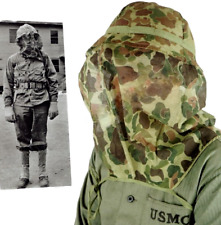
Authentic 1943 WWII USMC Mosquito Net Helmet Cover Jungle Camo Mildew Resistant $19.90
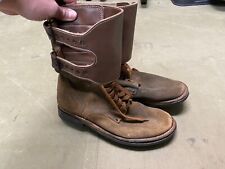
WWII US ARMY INFANTRY M1943 M43 COMBAT FIELD BOOTS-SIZE 12 $212.46
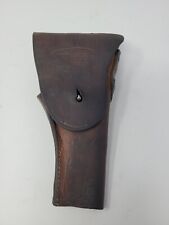
1943 WWII US Army M1916 1911 .45 Caliber Pistol Holster Graton & Knight Co $74.63
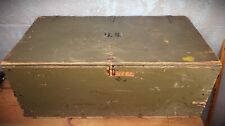
1943 WWII US Army Footlocker Chest Trunk OMAHA FIXTURE & SUPPLY Supply $99.95
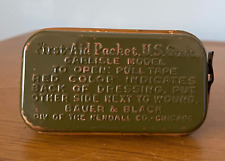
NOS 1943 WWII U.S. Carlisle First Aid Kit Bauer and Black Bandage Kit Sealed $14.99
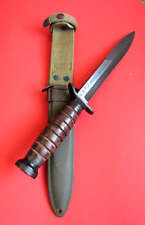
WWII WW2 US M3 DATED IMPERIAL 1943 FIGHTING KNIFE EXCELLENT $2295.00
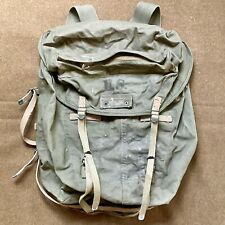
US ARMY / USMC Jungle Canvas Backpack Field Pack - Hepburn Mfg Co. 1943 - WWII $225.00
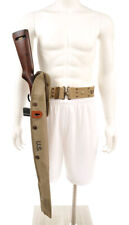
US WWII M1 Carbine Canvas Holster Case Marked JT&L 1943 (Holster only) $32.99
|